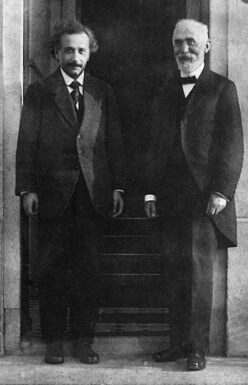Photoelectric effect: emission of electrons from a metal by radiation of an appropriate wavelength
One photon can release one electron. The minimum energy needed to release an electron from the metal is called Work Function Wu. This Wu depends on the metal.
Electrons are only released when the energy of the incident photons is greater than or equal to the work function of the metal, so if hf ≥ Wu
The threshold frequency f0is the lowest frequency of incident radiation at which electrons can be released
So we have:
- f < f0 no release of electrons
- f = f0 the energy of the incident photons is equal to the work function hf = h f 0 = Wu
- f > f0 the energy of the incident photons is greater than the work function.
The difference in energy is the maximum kinetic energy of the ejected electrons
Ek,max = hf – Wu = hf – h f0
Example
Radiation (λ = 5.0 x 10-7 m) falls on a cathode covered with Cs.
Calculate the maximum kinetic energy of the ejected electrons.
Work function Cs = 1.94 eV
Incident radiation : E = hf = hc/λ = 6.63.10-34((3.00 x 108)/(5.0 x 10-7 )) = 3.978 x 10-19 J =
(3,978.10-19)/(1.6.10-19) = 2.49 eV.
Ek,max = 2.49 – 1.94 = 0.55 eV = 0.55 x 1.6.10-19 = 8.8 x 10-20 J
